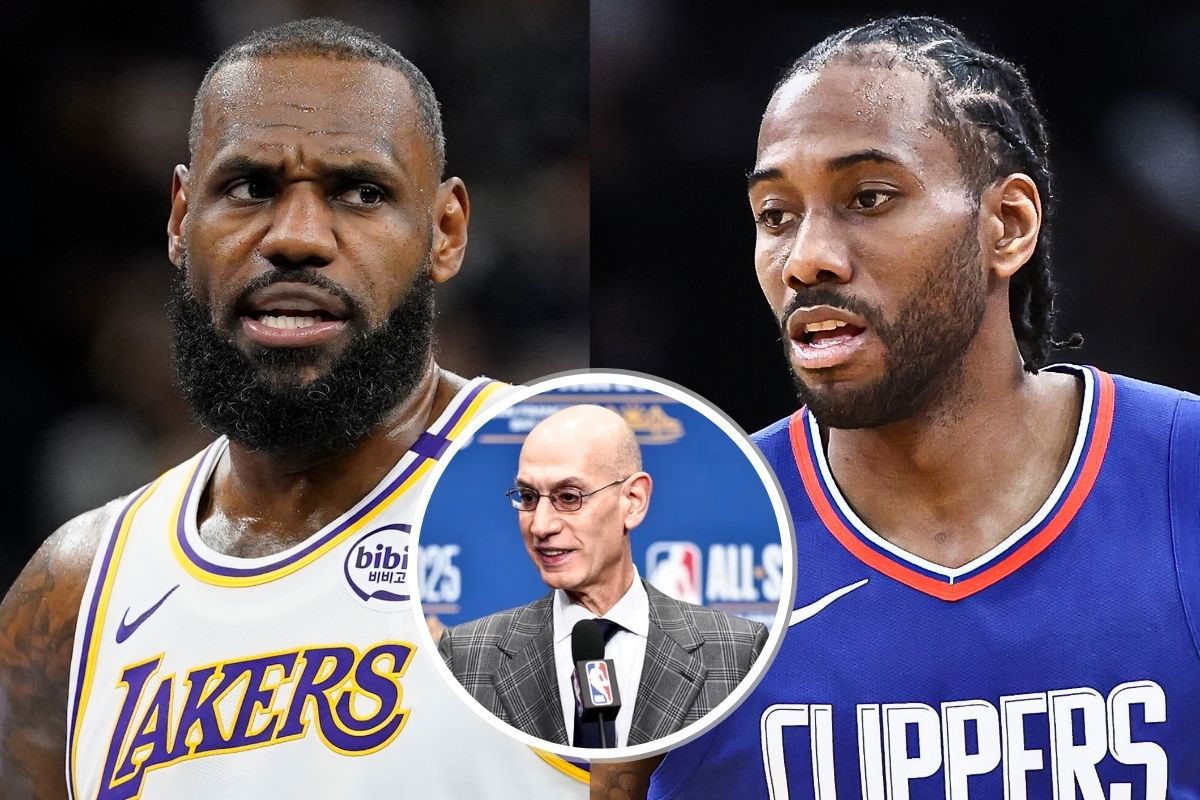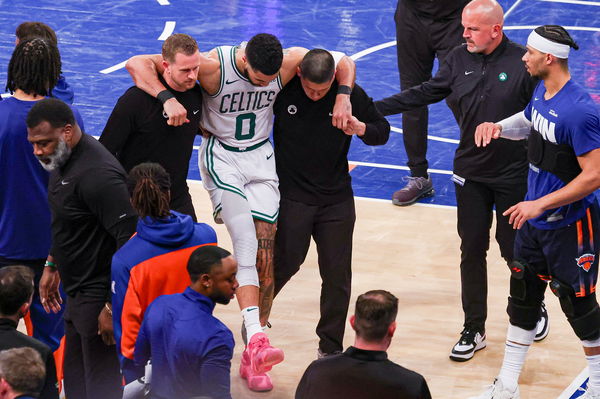

Injuries have hijacked the NBA’s headlines before the regular season even tips off. The league’s billion-dollar summer has been overshadowed by a growing sense of unease, as star after star falls victim to overuse, recovery mismanagement, or plain bad luck. Kawhi Leonard’s situation with the Clippers, once brushed off as “load management”, now looks like a cautionary tale rather than a luxury. His repeated knee issues have become yet another symbol that the league is pushing its players to the brink, even as teams insist rest doesn’t correlate with health. And now, LeBron James and Steve Nash have joined the long list of those advocating for a change.
Watch What’s Trending Now!
While discussing the sheer amount of superstars injured for the upcoming season on their ‘Mind The Game‘ podcast, Nash asked James about how much of it has to do with the number of games today’s players have to play each year. The Los Angeles Lakers forward gave a very balanced reply: “I mean, I don’t know, I can’t sit here and say that I have the direct answer to that. But we are at this point in the era that we’re playing in, it’s a lot more running… It’s a lot more possessions, a lot more space. It can result in a lot more wear and tear on the body in the course of 82 game season… We all want to play 82. “ While LeBron played it safe, Nash did not hold back.
“When the acceding-deceling in space, there’s no getting around the wear and tear that causes. Like, we were talking about elite athletes covering elite athletes in bigger spaces, longer rotations, more closeouts, more possessions. Unfortunately, it just is a factor… I hate load management. But it’s a part of the equation. We have to be smart. We don’t want guys to miss when LeBron James goes to Atlanta, we don’t want some kid to be sad ’cause he’s got to sit up. But sometimes that’s the reality. It’s that we have to be smart about it. I feel like it’s an important part of the puzzle is managing the rigors of the game.” Nash’s comments, though broad, hit especially close to home when you think about players like Leonard, whose career has become the poster child for the NBA’s ongoing load management dilemma.
ADVERTISEMENT
According to ESPN’s Baxter Holmes, Leonard’s injuries have long created tension within the Clippers organization, with one former staffer revealing that “it caused extreme angst within the medical department.” Over the past six seasons, he’s appeared in just 266 games, less than half of the team’s total, while his camp, led by uncle Dennis Robertson, maintained strict control over his treatment and interactions with team doctors. The Clippers reportedly agreed to “say nothing unless absolutely necessary” about his health when signing him in 2019, speaking of the mistrust left from his fallout with the Spurs. That strained dynamic resurfaced again last season, with his status uncertain until coach Ty Lue confirmed he’d be sidelined indefinitely. Now, look at the numbers invested in him.
After his initial signing in free agency, Leonard has signed two separate extensions with the Clippers. The first was a four-year, $176.3 million deal in August 2021. And then, a three-year, $153 million deal in January 2024. But through it all, the two-time Finals MVP repeatedly faced the challenge of balancing health and performance, with the last season he played at least 60 games being 2023-24, when he still averaged 23.7 points and 6.1 rebounds per game.
Although now at Clippers Media Day, he revealed he can move, train, and practice freely without constant medical oversight, something most players take for granted. But Leonard’s situation is far from unique. The league-wide debate over player health has intensified in recent years, fueled by stark data. A 2024 NBA report revealed that stars, defined as All-Stars or All-NBA players, now miss an average of 23.9 games per season, more than double the 10.4 games missed by stars in the 1980s. Teams are playing at a faster pace than ever, launching 48 three-pointers per game in some cases, with players covering more ground and engaging in more high-intensity possessions than previous generations.
ADVERTISEMENT
NBA coach Steve Kerr, reflecting on his experience as a player and current coach of the Warriors, has been an outspoken advocate for shortening the regular season. “Pace and space,” Kerr said. “When I played, you didn’t have to run out to 30 feet to cover a shooter. Now, you do. Everyone is playing faster. The numbers do show that our players and the NBA are covering way more ground than they were 15, 20 years ago… It’s significant information. It matches up with what we are seeing on the floor.” Kerr even reached out directly to Commissioner Adam Silver, warning that the 82-game schedule is “asking way too much of our players” and could compromise both performance and long-term health.
While some, like NBAPA president CJ McCollum, prefer keeping the traditional 82-game slate for the challenge it presents, rising injury counts and elite player concerns, including LeBron and Nash’s recent remarks, go on to show a growing tension between financial incentives and athlete welfare. But the NBA, on its part, had sent an exhaustive report to its teams in 2024 that showed that they “did not see a lower injury rate when players rested.” This was the result of an independent research on 10 years of NBA data, where schedule, number of games played, and other factors like age and injuries were taken into account.
ADVERTISEMENT
Yet now, Leonard, Curry, and countless others are at the center of this debate, making it clear that the league faces an important decision: prioritize health and longevity or maintain the status quo for short-term profit. So, what can be the solution?
Is there a way to solve the NBA’s load management crisis?
Although the NBA did come up with a way to combat the issue, as they issued a minimum threshold of 65 games for them to become eligible to be considered for the end-of-the-season honors, that doesn’t solve the root cause. You see, while this might prompt players to not sit out every game, the real problem, as Lakers superstar LeBron James and former NBA guard Steve Nash pointed out, is the wear and tear of muscles.
ADVERTISEMENT
The only, or rather an immediate solution, is to reduce the number of regular-season games unless there’s a solid alternative. That’s because any other solution than that will not help the players’ health, which should be a priority for the association. In fact, as mentioned, Warriors head coach Steve Kerr has already raised this concern before. “I’m concerned about the product because I think we are asking way too much of our players,” Kerr said back in November last year.

Imago
May 12, 2025; New York, New York, USA; Boston Celtics forward Jayson Tatum (0) is helped off the court by after an injury in the second half during game four of the second round for the 2025 NBA Playoffs against the New York Knicks at Madison Square Garden. Tatum would leave the game with an injury after this play. Mandatory Credit: Vincent Carchietta-Imagn Images
“The game has never been more difficult to play at a high level night after night after night. We should account for that. We all need to be thinking about that, for sure.” The Dubs boss pointed out that, given how difficult the game has become for players daily, teams have no choice but to sit out their players for certain games. As disappointing as it might be for the fans, it’s something the franchises have to do to avoid risking their players suffering a serious injury.
ADVERTISEMENT
Now, with more players and coaches joining Kerr, such as James and Nash, the league might finally be forced to look into this issue. However, reducing the number of games is easier said than done. So, will Adam Silver and Co. finally take some action to solve the NBA’s load management issue, or not? That’s something we can only wait and watch as the new season approaches.
ADVERTISEMENT
ADVERTISEMENT
ADVERTISEMENT

